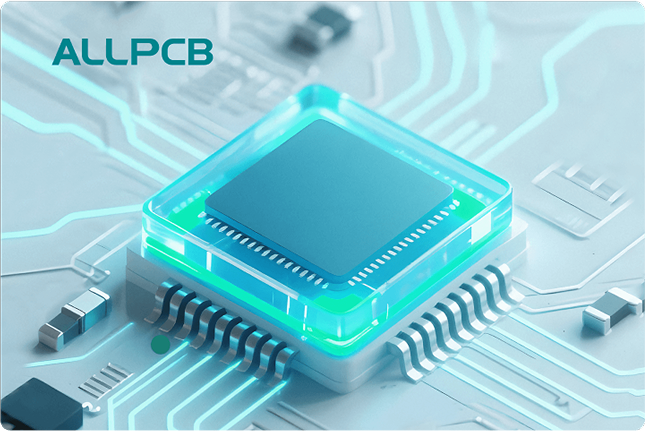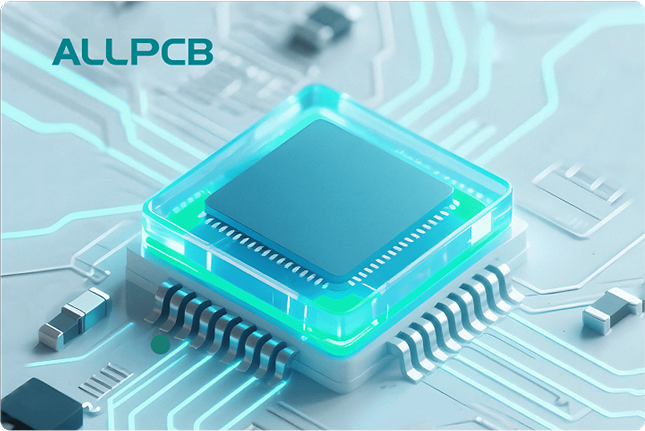In the world of electronics, designing a multi-layer PCB (Printed Circuit Board) is both an art and a science. One critical factor that can make or break your design is the layer stackup, especially when it comes to managing Electromagnetic Interference (EMI). A well-planned multi-layer PCB stackup can significantly improve EMI shielding PCB performance, reduce noise, and ensure signal integrity. But how exactly does the arrangement of layers impact EMI, and what can you do to optimize it?
In this comprehensive guide, we’ll dive deep into the relationship between layer stackup and EMI performance. We’ll explore the role of ground plane design, power plane design, and PCB noise reduction techniques to help you create robust and reliable multi-layer PCB designs. Whether you're an experienced engineer or just starting, this post will provide actionable insights to elevate your designs.
What is a Multi-Layer PCB Stackup and Why Does It Matter?
A multi-layer PCB stackup refers to the arrangement of conductive copper layers and insulating dielectric materials in a printed circuit board. These layers typically include signal layers, ground planes, and power planes, stacked in a specific order to meet the electrical and mechanical requirements of the design. Common configurations include 4-layer, 6-layer, 8-layer, or even more complex setups for high-speed or high-density applications.
The stackup directly impacts how signals travel, how power is distributed, and how well the board can shield against EMI. EMI, or Electromagnetic Interference, occurs when unwanted electromagnetic fields disrupt the normal operation of electronic devices. Poor stackup design can lead to crosstalk, signal degradation, and failure to meet regulatory EMI standards. By optimizing your multi-layer PCB stackup, you can enhance EMI shielding PCB capabilities and ensure your product performs reliably in real-world conditions.
How Layer Stackup Affects EMI Performance
EMI performance in a multi-layer PCB is influenced by several factors related to the stackup. These include the placement of ground and power planes, the spacing between layers, and the overall symmetry of the design. Let’s break down the key ways in which layer stackup impacts EMI.
1. Proximity of Ground Planes to Signal Layers
In a multi-layer PCB, ground planes act as a reference for signals and a shield against EMI. When signal layers are placed close to a ground plane, the return path for high-frequency signals is shorter, reducing the loop area and minimizing radiated emissions. For example, in a 4-layer stackup, a common arrangement is:
- Top Layer: Signal
- Layer 2: Ground Plane
- Layer 3: Power Plane
- Bottom Layer: Signal
This setup ensures that signal layers are adjacent to a ground plane, providing effective ground plane design for EMI control. Studies show that reducing the distance between a signal layer and its reference ground plane to 5 mils (0.005 inches) can lower impedance and cut EMI by up to 20% compared to a 10-mil spacing.
2. Power and Ground Plane Coupling
Power and ground planes in close proximity form a natural capacitor, which helps in decoupling high-frequency noise. This is a cornerstone of power plane design for PCB noise reduction. When these planes are adjacent, they stabilize voltage levels and suppress noise that could otherwise radiate as EMI. For instance, in a 6-layer PCB, placing power and ground planes in the middle layers (e.g., layers 3 and 4) can reduce noise by providing a low-impedance path for return currents.
3. Symmetry and Balanced Stackup
A symmetrical stackup helps maintain uniform impedance and reduces board warpage during manufacturing. More importantly, it ensures consistent EMI performance by balancing the distribution of signal, power, and ground layers. An unbalanced stackup, such as placing multiple signal layers on one side without a nearby ground plane, can create uneven return paths and increase EMI. A balanced 8-layer stackup might look like this:
- Layer 1: Signal
- Layer 2: Ground
- Layer 3: Signal
- Layer 4: Power
- Layer 5: Power
- Layer 6: Signal
- Layer 7: Ground
- Layer 8: Signal
This arrangement ensures each signal layer has a reference plane nearby, optimizing EMI shielding PCB performance.
Key Strategies for Optimizing Layer Stackup for EMI Performance
Now that we understand how layer stackup impacts EMI, let’s explore practical strategies to design a multi-layer PCB stackup that minimizes interference and boosts performance. These tips focus on ground plane design, power plane design, and overall PCB noise reduction.
1. Prioritize Ground Planes Near Signal Layers
Always place ground planes adjacent to signal layers, especially for high-speed signals operating above 100 MHz. This reduces the loop inductance and confines the electromagnetic fields, cutting down on radiated EMI. For high-speed designs, ensure the dielectric thickness between the signal and ground layer is as thin as possible—typically 3 to 5 mils—to maintain low impedance, often targeting 50 ohms for controlled impedance traces.
2. Use Dedicated Power and Ground Planes
Dedicated power and ground planes are essential for effective power plane design. Avoid splitting power planes unnecessarily, as splits can disrupt return paths and create EMI hotspots. If multiple voltage levels are needed, use separate power planes or carefully route power traces on a single plane with proper decoupling capacitors (e.g., 0.1 μF ceramic capacitors) placed near IC power pins to filter noise.
3. Implement Proper Layer Spacing
The spacing between layers affects both signal integrity and EMI. Tighter spacing between power and ground planes (e.g., 10 mils or less) increases capacitance, which helps in noise suppression. However, ensure that the spacing between signal layers and their reference planes is optimized for impedance control. Tools like impedance calculators can help determine the ideal dielectric thickness for a target impedance of 50 or 75 ohms, commonly used in high-speed designs.
4. Minimize Signal Layer Transitions
When signals transition between layers through vias, they can create discontinuities in the return path, leading to EMI. Minimize these transitions by routing critical signals on a single layer whenever possible. If transitions are unavoidable, place stitching vias connected to ground near the signal vias to provide a continuous return path, reducing loop area and EMI by up to 15% in some designs.
5. Shield Sensitive Signals with Ground Layers
For designs with sensitive analog or RF signals, use ground layers to sandwich these signals, creating a Faraday cage effect. This enhances EMI shielding PCB performance by blocking external interference. For example, in a 6-layer stackup, route sensitive signals on an inner layer (e.g., layer 3) with ground planes on layers 2 and 4 to provide maximum shielding.
Common Mistakes in Multi-Layer PCB Stackup Design
Even with the best intentions, designers can make mistakes that compromise EMI performance. Here are some pitfalls to avoid when planning your multi-layer PCB stackup.
1. Neglecting Ground Plane Continuity
A split or fragmented ground plane disrupts return paths, increasing loop inductance and EMI. Always maintain a continuous ground plane beneath high-speed signals. If splits are necessary for mixed-signal designs (e.g., analog and digital), use a single ground plane with careful partitioning and connect the sections with a bridge or ferrite bead to control noise.
2. Poor Power Plane Placement
Placing power planes far from ground planes reduces their decoupling effect, leading to higher noise levels. Always pair power and ground planes closely in the stackup to maximize capacitance and improve PCB noise reduction.
3. Overloading Signal Layers
Routing too many high-speed signals on a single layer without adequate spacing or reference planes can cause crosstalk and EMI. Distribute signals across multiple layers and ensure each layer has a nearby ground plane for reference.
Advanced Techniques for EMI Reduction in Multi-Layer PCBs
For complex designs, basic stackup rules may not be enough. Here are advanced techniques to further enhance EMI performance through multi-layer PCB stackup optimization.
1. Use of Buried Capacitance
Buried capacitance involves using very thin dielectric materials (e.g., 2 mils) between power and ground planes to create high-capacitance layers. This technique can reduce noise by up to 30% in high-frequency designs, acting as an embedded decoupling capacitor across the entire board.
2. Differential Pair Routing
For high-speed signals like USB or HDMI, route differential pairs on the same layer with a nearby ground plane. Maintain consistent spacing (e.g., 5 mils between traces) and length matching to within 10 mils to prevent common-mode noise, a significant contributor to EMI.
3. Edge Shielding with Ground Vias
Place a row of ground vias along the edges of the PCB to create a shield that contains electromagnetic fields within the board. Space these vias at intervals of λ/20 (where λ is the wavelength of the highest frequency signal, often around 1 GHz or 0.3 meters) to effectively block radiated emissions.
Conclusion: Mastering Layer Stackup for Superior EMI Performance
The design of a multi-layer PCB stackup plays a pivotal role in determining the EMI performance of your board. By focusing on ground plane design, power plane design, and strategic layer arrangement, you can achieve robust EMI shielding PCB capabilities and effective PCB noise reduction. From ensuring ground plane proximity to signal layers to implementing advanced techniques like buried capacitance, every decision in the stackup process matters.
As you tackle your next PCB project, remember that a well-thought-out stackup is not just about meeting electrical requirements—it’s about building a reliable, interference-free design that stands up to the demands of modern electronics. Use the strategies and insights shared here to optimize your multi-layer PCB designs and achieve outstanding performance in even the most challenging environments.
 ALLPCB
ALLPCB







